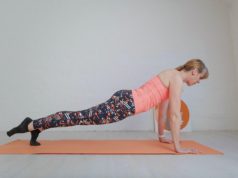There’s always talk of runner’s feet and the UKRunChat community love sharing gruesome photos of toenails in 50 shades of black! But, what about our hands? We regularly expose them to the elements and many of us don’t give them a second thought. For most of us there’s nothing better than a long run on a chilly clear winter’s day but for some runners, those who have Raynaud’s disease, the crisp cold days of winter spell misery.
I wanted to write about Raynaud’s Disease as it’s something I get asked about quite often and it can be a real issue for runners who suffer with it.
What is it?
Raynaud’s disease affects 10 million people in the UK, so it’s pretty common and you probably know someone who has it. People with Raynaud’s have very sensitive extremities. It’s usually fingers that are affected but it can be a problem in toes, ears and the nose too. I’ve even read reports of it happening in nipples…ouch! The small blood vessels in the extremities spasm and constrict when exposed to the cold. Emotional stress, hormonal changes and vibration tools can be triggers too. The fingers typically turn white and go numb; they look ‘dead’. Then they change to a blue colour as the blood supply falls. When the fingers eventually warm up they flush red in colour and throb as the blood returns to them. This rewarming stage can be exceptionally painful.
What causes it?
In 90% of people there’s no cause and there’s no cure either so it’s a case of finding ways to manage it and reduce the symptoms it gives you. In the remaining 10% there’s an underlying medical condition which can vary from scleroderma to rheumatoid arthritis, so it’s worth checking with your GP if you have other health problems alongside your Raynaud’s. Don’t forget smoking makes it worse so that’s another one to add to the ‘reasons to stop’ list.
Although running can boost circulation generally, when we’re exercising hard our body is more interested in maximising the blood flow to our muscles so it’s less interested in our extremities and blood is diverted away from them. If we have Raynaud’s then this can add insult to injury on a cold day.
What can you do about it?
It’s awful as a runner if every time you head out for a run you go through this uncomfortable string of events. Avoidance of triggers is the key but that’s easier said than done if it’s winter and you just want to run! The options in terms of medication are limited. There are a group of drugs called calcium antagonists which can reduce how often or severe the symptoms are but they do have side effects and aren’t always effective. In severe cases a drug called iloprost can be slowly infused into the circulation to reduce attacks and there are some surgical techniques for the most extreme cases.
So, prevention is best and here are some simple steps you can try:
- Keep your hands warm: Sounds obvious but not letting them get cold in the first place is easier than trying to warm them up. Keep your gloves on the radiator so they’re warm when you put them on. If you need to rewarm your hands then soaking them in warm (not hot) water is the best option.
- Keep your body warm: We’re more likely to get cold hands if we have a cold body so layer up and go for the ‘bit too hot’ rather than ‘bit to cold’ ethos. We don’t lose 50% of our body heat through our head as the longstanding myth would have us believe, it’s more like 20 to 30% but don’t forget your hat to conserve this.
- Choose the right gloves: You need to experiment to find the right pair for you. Asking the UKRunChat community is a good way to get recommendations. Look for ones which are windproof as the wind chill makes a significant difference. Some people prefer mittens or try putting mittens over your regular gloves. You can get heated gloves and hand warmers too. Don’t forget you can buy gloves which are touch screen sensitive so you don’t have to take them off to stop your Garmin or take a photo.
- Look at liners: We layer up on our body so why not our hands? Glove liners can add that extra bit of insulation, trapping air between layers will increase warmth. Most liners are cotton or synthetic thermal but if you splash out on silk you may find they’re more effective. Silver is also a popular component of gloves for Raynaud’s sufferers.
- Look after your hands. Keep skin supple and healthy by avoiding chemical irritants (get your Marigolds on for the washing up) and using plenty of thick moisturiser. Dry cracked skin and poor circulation is a recipe for skin infection. Eating a good healthy, balanced diet with loads of fresh fruit and veg won’t stop Raynaud’s but it’ll help to keep skin in good condition from the inside out.
If you want more advice about Raynaud’s disease then have a look at the Raynaud’s and Scleroderma Association website. http://www.raynauds.org.uk They have an online shop for products too.
If you’ve got Raynaud’s and have your own tips or tricks then share them in the comments below or Tweet me @JulietMcGrattan
Matt Upston:
Hand swelling could also be caused by Hyponatremia. read my experience of it here: http://www.ukrunchat.co.uk/hyponatremia-an-idiots-guide-and-experience/






